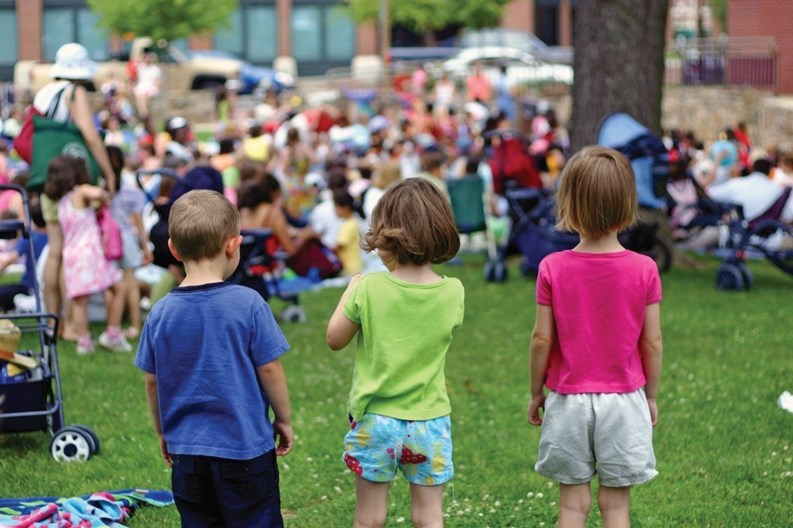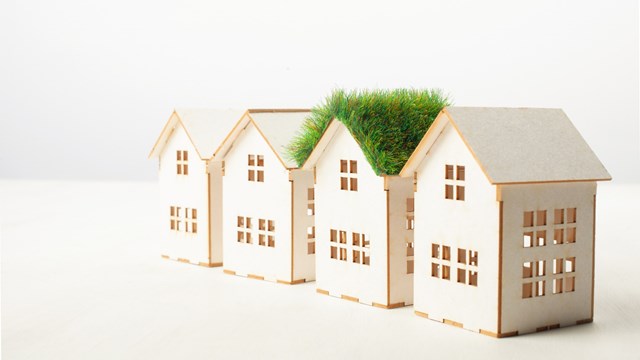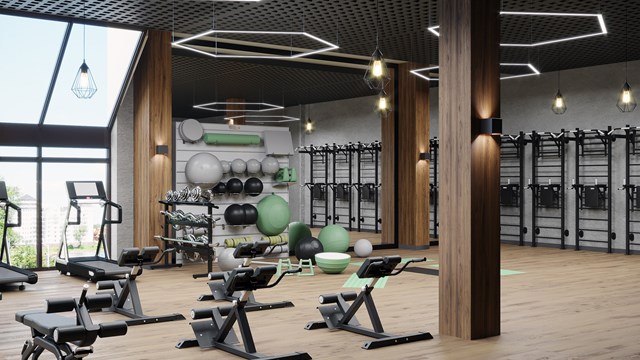In every condominium there is a group of people who have chosen to live together—for better or for worse.
Although some prefer to keep to themselves, most are looking to meet their neighbors and develop a sense of community. Owners have opportunities to congregate in public places like the pool or tennis courts, but oftentimes the condominium association can give the process a nudge by sponsoring public events such as picnics, social hours, holiday parties and meetings of various groups and clubs.In every condominium there is a group of people who have chosen to live together—for better or for worse.
Although some prefer to keep to themselves, most are looking to meet their neighbors and develop a sense of community. Owners have opportunities to congregate in public places like the pool or tennis courts, but oftentimes the condominium association can give the process a nudge by sponsoring public events such as picnics, social hours, holiday parties and meetings of various groups and clubs.
Not only can these events affect the way owners feel about their homes and their lives, but as they increase in numbers these social activities can alsohave a major impact on the community’s property values.
In the book Community Associations: The Emergence and Acceptance of a Quiet Innovation, attorney and former Community Associations Institute (CAI) president Robert M. Diamond argues that “community affects sales and profitability.”
So how does a condominium become a community of active owners? And how does that community stay strong? “Community exists when a development has a sense of place, people have a sense of belonging, and residents take pride in their surroundings,” Diamond writes.
And one of the best ways to increase a sense of belonging is for condominiums to start adding public social events to their calendars.
Almost Any Event Will Do
The size of your condo will determine the size of your event, but almost any type of event can be tailored for an association. An annual bring-your-own-picnic on the grounds of your condo might be augmented by an association-sponsored make-your-own-sundae table to attract families with children. Take away the ice cream and add cakes and coffee for an older crowd. A formal tea with tea sandwiches (no crust, please) and cakes in the front lounge on a cold winter's day may be just the thing needed to lift the spirits of everyone in an over-55 condo; whereas a sledding party or snowman contest with hot chocolate and warm cookies or perhapsa grill fire for toasting marshmallows and making s'mores might bring out a crowd of youngsters.
Each fall, the Ashland, Massachusetts condominium communities sponsor a grand picnic for their condo owners as well as for town employees, including the police and firefighters. Four condominiums in Ashland—1000 Pines, Starlight Village, Half Moon Village, and Village of Westerly—participate inthe Joint Advisory Committee (JAC), which is responsible for planning the event. This past year more than 400 people enjoyed free hamburgers, hot dogs, corn on the cob, chips, salads, desserts, soda, and more. Alan Bovarnick, a key organizer from 1000 Pines, said that 10 to 20 volunteers are needed to make the event happen, although the bulk of the work is done by a smaller number.
Before scheduling any event, it’s best to get organized to ensure its success. Organization is the biggest challenge, according to Bovarnick, who notes that the date of the Ashland picnic is set in winter for the fall event. The caterer is lined up by March, and the event is discussed at the JAC's monthlymeetings. Volunteers meet more often as the date approaches.
When planning an event be sure to take the following steps:
- Determine the scale: Decide first what type of event might attract the most people and how much money the association can spend, then put together a committee to get the work done. It's best to start with a straightforward event that will require only a few volunteers and little money. One project manager might coordinate, say, four or five other volunteers.
- Pick a leader: The project manager should be gregarious, organized, and positive. The association leaders should find the project manager and help that person find the lead helpers, or task managers. The project manager must make a list of all the jobs that need to get done and assign a person to lead each of those tasks. The Ashland JAC, for example, rents tents, tables, and chairs. Last year, a DJ spun records, “Davey the Clown” entertained the littlest tots, and a tennis pro helped anyone looking to improve his or her game. There was a slush machine, a spin-art machine, and an ice-cream vendor (each attendee received a coupon for one free ice cream). Local businesses and vendors donated many items that were raffled. The police and fire departments brought patrol cars and fire engines for the kids to climb in and on, and the police set up a children's fingerprinting clinic. Volunteers, or “task managers,” were assigned to each of these areas, so the burden of organization didn’t fall on a single set of shoulders.
- Plan a budget: The task managers should make a list of supplies and services needed, including everything from paper plates to DJs to rented hot plates, and decide what might be donated and what will require money. The association mustdecide if it is willing and/or able to spend any funds on the event.
Also, think about vendors and management companies as possible sources for funding or for volunteering services. Perhaps your landscaping contractor would be willing to donate an extra mowing to ensure that the grass is short the day of your event. Maybe your management company will pay for a tray of sandwiches or coffee and cookies for all. Any vendors that your association uses regularly should be willing to help in some way. It is probably best that you stay within a budget that doesn't require charging a fee to attendees. You want people to come to the event and enjoythemselves without the burden of evaluating whether or not they got their money's worth.
Generous donations from local businesses, vendors, and the management company cover most of the cost ($5,000–$10,000) of the Ashland event, and each association chips in a fixed amount per unit ($1.50 per resident, this year) to cover the remainingexpenses. Bovarnick credits property manager David Levy, PCAM, of Sterling Services as instrumental in getting the event under way.
Divide the work: People are busy, and the smaller the job, the more likely you will find someone willing to take it on. If setup will take just one hour on a Saturday morning, it shouldn't be too hard to find a few people to help. If your event requires eight hours to set up, you may need to divide that job into even smaller tasks, such as puttingout chairs or building a stage. Other jobs might include: food, beverages, activity, entertainment, publicity, and clean-up.
Calling community members directly is probably the best way to get volunteers, but you might also put up fliers asking for help, send out a mailing, or include a request for help in the association newsletter if you have one. In this way, everyone in the complex will know that they are welcome and encouraged to help in any way they can. Your written requests should include a list of specific jobs so that people can match their interests and talents with your needs.
Alternately, you could hire a crew to set up and clean up and use your volunteers for the other work; or have volunteers setting up and cleaning up and hire an event planner to take care of everything else. But association members should be doing some of the work; they should feel like it is their event. After all, part of the communitybuilding is in the working together to accomplish a task for the good of the community!
Another key Ashland organizer, Diane Roberts, of Starlight Village, noted that “putting all that together is quite a lot of work, but we are fortunate to have a great group of JAC members who are always ready to pitch in and help.” She explained that the group of volunteers is generally exhausted by theend of the day, so they have started to hire workers to help clean up and take down tents and fold chairs. These workers are also offered all the leftover food to take home.
Record the fun: Make sure someone is assigned to taking photos at the event and be sure to display them in a public space for all to see (a job for another volunteer). This could mean a bulletin board collage, a number of framed prints hung down a hallway, a newsletter page devoted to the event, or a Web page devoted to it. The photos should concentrate on the interaction of neighbors having fun together. Close-ups of two friends sharing a laugh can be more effective than long shots of a roomful of people sitting at tables. The idea is to document the building of relationships through a common activity, people creating a history with one another. Displaying these photos will allow those who were there to relive the event and confirm their bonds, and those who were not there to witness the fun and perhaps make them more likely to attend the next event.
“Each year we have seen more and more participation as the word spreadsabout what a great time everyone has,” Roberts said. “It's a great way for people to meet each other.”
Bovarnick added that the event has had a very positive effect on how the condominium communities interact with the town. It has brought the town leaders, fire department, and police department into the condominium communities. “The town fathers are finally involved with the condominiums,” Bovarnick explained. “They finally see condominium ownersas home owners. We now meet with the police department regularly.”
In fact, a police sergeant has now been assigned to the Ashland Condo-miniums as part of a neighborhood officer program. He helped organize an evening event at the condominiums on identity theft and Internet fraud, and a firefighter attended to discuss the importance of carbon monoxide detectors. Pizza, salads, and sodas wereserved. Another event is currently being planned.
“It's a win-win situation for everyone,” said Bovarnick. “We had a terrifictime in doing it all. We had a ball. If you go in with the idea that it will be fun, it will be.”






Leave a Comment